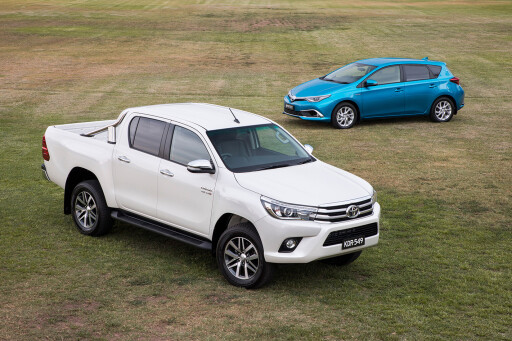
If efficiency is intelligent and inefficiency is dumb, then cheap fuel is surely making us stupider.
Just look at Australia's new vehicle sales numbers. In 2017 sales of SUVs overtook cars, and a pair of pick-ups were the nation's best-selling vehicles.
The connection between what people need and what they buy is coming unglued.
Some buyers truly need a capable SUV, but surely they don’t make up 39 percent of the new-vehicle buying population?

And there must be many who must use utes to get their daily work done, but do you think they account for 20 percent of the market?
With the Toyota Hilux, Ford Ranger, Mazda CX-5 and Hyundai Tucson spearheading the charge, SUVs and (mostly) 4WD pick-ups together accounted for 59 percent of 2017 new-vehicle sales in Australia.
Last year, the share of passenger cars was just 38 percent, with further decline predicted. Depending on your viewpoint, this phenomenon might evoke wonder, horror, or indifference. And there’s a good debate to be had about what precise mixture of affluence, ignorance, market forces, driving environment and social pressure is propelling the trend.
But one thing that can’t be disputed is that Australia’s inexpensive fuel contributes to it. Cheap petrol and diesel mean choosing inefficiency comes with a negligible penalty.

There’s no meaningful incentive for buyers to opt for the opposite. It’s different in Europe. In Italy and the UK, the places I most frequently buy fuel, a litre of regular petrol costs roughly $1 more than it does in Australia.
There’s not a pick-up to be found in these countries’ Top 10 best-seller lists. The Fiat Panda and Ford Fiesta instead top the charts. There are SUVs among the best-sellers in both places, but they are models that are one or even two sizes smaller than the most popular SUVs in Australia.
Not only the sales charts suggest that efficiency really matters to new-car buyers in Europe. In 2016, the excellent Italian monthly Quattroruote conducted one of the smartest consumption comparisons I’ve ever come across. They first selected a bunch of vehicles where exactly the same engine is installed in a car and an SUV (or MPV).
Each pair was fitted with test equipment and put through the same three custom-designed driving cycles, duplicating typical average driving on city streets, arterial roads and motorways. The aim was to precisely measure how much more the SUVs burn than cars with exactly the same engine.
.jpg )
Worst of all was the Mercedes-Benz GLC 220d, which overall used 23 percent more than the C220d sedan.
The Jaguar F-Pace 2.0d was better. It consumed 14 percent more than the XE sedan with the same Ingenium diesel.
The differences discovered by the Italians were much reduced at the small end of the spectrum – Mazda 2 v CX-3 and Renault Clio v Captur – but in every single case the taller, heavier vehicle consumed more fuel, and therefore emitted more CO2.
Affording those extra litres obviously isn’t troubling many Australian new-car buyers. But the environmental cost of burning them is surely something only the dumb will dare deny.

COMMENTS